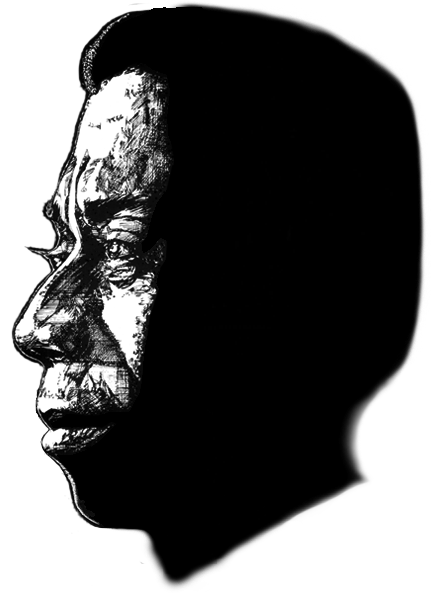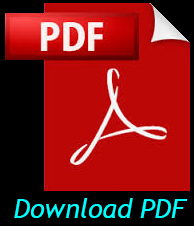- OVERVIEW
- Inspired by Civil Rights activist / best-selling author James Baldwin (1924-1987)
– and driven by an urgent need for social change – the Baldwin Project was created to open minds and change lives.
The heart of this effort is our Outreach & Engagement initiative “Conversations with Jimmy.” An ongoing series of community forums, CWJ uses the award-winning film classic JAMES BALDWIN: THE PRICE OF THE TICKET (recently re-mastered to Digital WideScreen HD) to spark town-wide discussions on diversity, discrimination and the meaning of brotherhood … in the context of current events.
Launched in the fall of 2014, “Conversations with Jimmy” premiered at the National Gallery of Art in DC and the New School in NYC. In 2015, with funding from two state Humanities Councils, CWJ expanded into a regional pilot project: lfirst in Massachusetts, where James Baldwin spent his later years as a Five-College Professor, and then in Connecticut, the Baldwin Project’s home base.
Events are now being booked nationwide. - One of our first “Conversations with Jimmy” was at an educational institution in North Central Massachusetts: Mt. Wachusett Community College. It was snowing, but not enough to cancel. Announcements of the event were posted downtown. At the entrance to the campus, an electronic billboard featured our film screening; in the school bookstore window, Baldwin books caught the eye; in the hallways, posters of Jimmy. There was also the smell of hot pizza, a gift from the administration: a good thing, because even though our event was free, it was optional.
The outreach worked. Students of all ages, employees, people from the community – some of whom later told us they had actually walked there, because public transportation had been delayed by the snowstorm – began filling the room. The Dean of Students, also an English professor, spoke of his passion for Baldwin (an unknown for some of those present), and we added our own brief introduction. By the time we turned down the lights and started the screening, over seventy people had wandered in. We worried that the café-style seating would make it hard for some to see the film, but that too turned out well: people shifted their chairs, and then, once the film was over and discussion began, they simply swiveled to face whomever was speaking. And nobody left.
We opened by sharing a few of our own stories about the film, about how it began as a collaboration with Baldwin while he was still living. Then came our Q&A: the Dean of Students was moderator; a portable mike made the rounds. Students asked about Baldwin. Professors made observations. We encouraged people to share their own reactions – and gradually, the conversation took off. Polite ‘questions for the filmmakers’ turned into personal commentary, about the film, about Baldwin, about their own lives and how Baldwin’s words seemed to be addressed directly to them.
One woman spoke about growing up in a bi-racial family. A white military vet said that he had been raised to be racist, but that his own thoughts had evolved when he made friends with black soldiers. A recent immigrant talked about the obstacles he faced daily. A parent asked what he should tell his kids; another shared her fears about her son’s ‘driving while black.’ A teenager raised his hand: just turned 17, gay, a high school dropout, now a pre-college Gateway student, he told us how he’d been beaten up at age 10 because he was ‘different.’ His legs shook as he spoke, he had tears in his eyes as he tried to explain what a surprise our film was and asked what Baldwin book to read first. The crowd applauded when he finally sat down. And the most wonderful part of all this is that about half-way through the talkback, audience members weren’t just speaking to us but to each other.
The whole event lasted nearly four hours. By the end of the day, people had bought every Baldwin book in the bookstore … and “Conversations with Jimmy” was a proven concept. - HERE'S HOW IT WORKS
- Host Communities range from university towns to inner cities to national parks with local populations. Each community is unique – but they all have neighborhoods where people tend to ‘stick to their own kind’: as in Holyoke, Massachusetts, where Latino and Black populations live ‘in the flats’ and wealthier white folk reside ‘in the hills.’ And they all have issues caused by discrimination.
How do we choose our hosts? Sometimes we reach out to them directly; sometimes we’re connected by funders and scholars. Some communities approach us, often as a result of googling Baldwin and exploring our website.
All of our programs are community collaborations. Much of the time, our main host is already in place – and if local schools and/or libraries aren’t already involved, we approach them as potential co-hosts. Then, with their help, local civic leaders are enlisted and a team of Programming Partners is formed: art centers, senior centers, civic groups, churches, LGBTQ organizations, even prisons. Some of them become co-hosts. Then, building on our past experience, they become invested: they custom-design their own program by choosing the timing, the venue, the participants … and the content.
Schools play a key role. Local scholars are invited to participate as moderators or panelists. Educators are also encouraged to involve multiple departments in both programming and attendance: literature, history, theater, music, gender studies, religion.... In the weeks before an event, Baldwin’s writing and his role in the history of Civil Rights are often inserted in classwork. Libraries and book clubs are enlisted as well.
All programs are free, and each one is different. A mix of in-school and public events, they always include some form of film screening: the original 90-minute BALDWIN film, the hour-long version (used by some high schools) or a 45-minute workshop with video clips. The screenings are followed by multiple options: live musical performances, readings, panel discussions, scenes from a play – all Baldwin-related, all designed to prime people for a “Conversation with Jimmy.” Then comes the pay-off: a public forum or ‘talkback’ of one-hour or more.
For example: At one state university, student rappers in the Drama Department gave a spoken word performance with excerpts from Baldwin’s work. At a high school, culinary students served food while the student jazz band played music from Baldwin’s era. At a multicultural arts center, professor/performance artist Rashida Braggs got the audience to provide back-up rhythm and sound effects while she recited a passage from a Baldwin short story. Local involvement can even extend beyond our event: some towns have created reading initiatives. Popular choices include Baldwin's essay “My Dungeon Shook – Letter to My Nephew” and the short story “Sonny’s Blues.”
Once content is decided, outreach begins. Programming Partners coordinate publicity and promotion; educators and students are asked to help. Outlets include local press, cable TV, talk radio, community bulletin boards, school announcements, social media – plus, often most important of all, each Programming Partner’s mailing list. The tasks are shared; the cost is minimal. And, because each partner has a different group of constituents, a diverse audience is usually guaranteed.
This diversity matters. In all cases, our goal — much like James Baldwin’s — is to reach differing ages and interests, both the privileged and the ‘underserved,' to offer hope and empowerment … and encourage them to interact with each other.
The culmination? Community conversations, moderated by community leaders – where community members determine the outcome. - WHY DO PEOPLE PARTICIPATE?
- As we have learned from experience, James Baldwin’s words, both written and spoken, have a powerful impact. This was true while he was alive; this is still true today. Whether in a post-screening forum or an in-class discussion, Baldwin’s mix of clear-sighted truth-telling, justified anger and hope reaches across difference, confirming perceptions for some, altering attitudes in others and moving many to tears. Baldwin opens minds. He inspires people to listen … and talk.
We know people need this. Beyond national news, we all have local issues to deal with: from name-calling to racial profiling, from economic disparities to physical violence, our crises are born of the same “myths and fears” that Baldwin dealt with. Ignorance. Prejudice. Distrust of difference. Injustices are inevitable unless we address these root causes. Yes, they are hard to dislodge – but with Baldwin as catalyst, strangers participate in discussions they didn't expect to have.
That’s why this matters. Again and again, we hear the same hunger: despite the distrust, people do want to have a voice and be heard, they want the respect that comes with that, the hope. They’re more open to change than they realize. After all, it’s a fact: Once our own voice has been heard, we are more likely to listen to others, to expand understanding, to form new alliances. To work together for change.
To become – as Jimmy so gently suggests at the close of our film – “better than we are.” - . . . . . . .


Celebrating 100 Years of James Baldwin’s Life & Work
Building on the Classic Film Biography "JAMES BALDWIN: THE PRICE OF THE TICKET"
